Experts reveal the best way to shovel snow safely and effectively – and how a secret trick with cooking oil can prevent injury
Shoveling snow is hard work – landscaping pros reveal the best way to shovel snow fast while staying injury-free
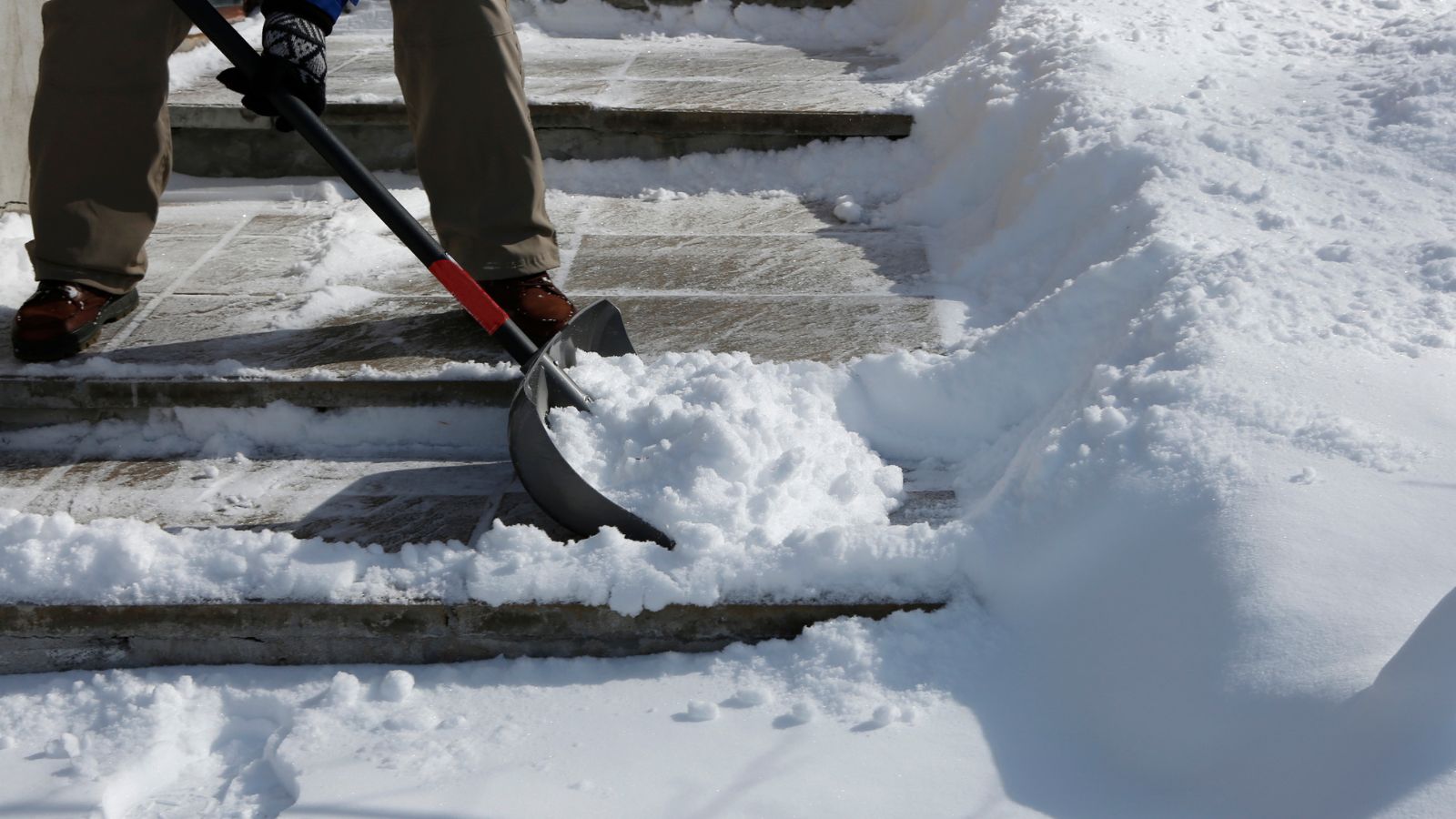

Snowfall blocks up pathways, doorways, and driveways, and in the depths of winter you need to clear it all out of the way.
If you don't have a snow blower on hand, you need to get hands-on and shovel all the snow. However, this can put a lot of strain on your back. Shoveling snow is a common domestic cause of painful back injuries.
I spoke to landscaping pros about the best ways to tackle snow shoveling, and they gave me lots of tips on the fastest, easiest, and most importantly, safest ways to handle snow.
1. The best way to shovel snow safely
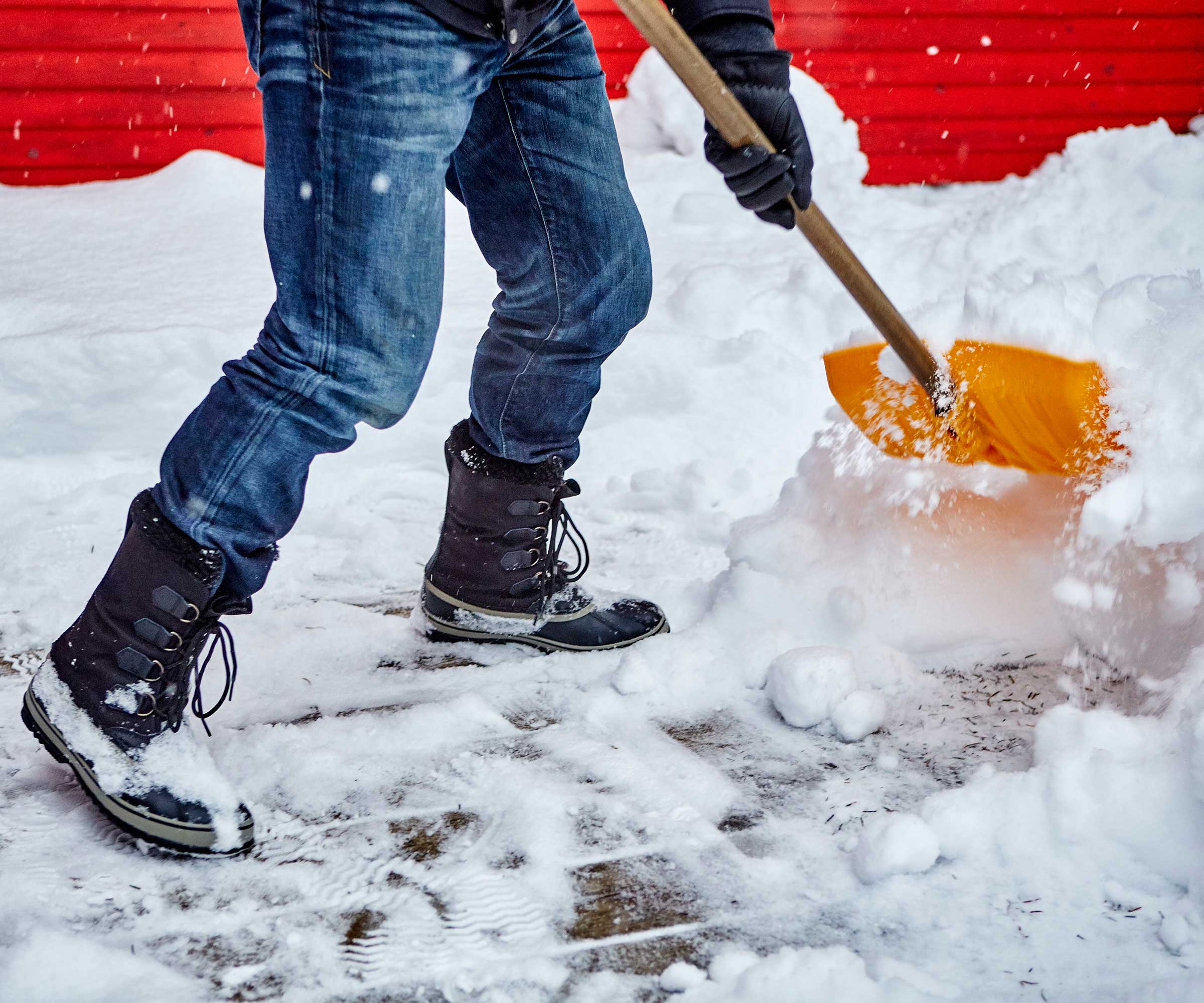
Shoveling snow causes thousands of back injuries every year, so it's crucial to know how to do it safely. Thankfully, the right technique is easy. If you've ever had to do manual handling training, you probably already know the basics.
Outdoor expert Steven Mena says 'As someone who works outdoors, I know it can be hard to deal with snow. To keep things easy on your body, make sure to face the area you're working on and stand with your feet shoulder-width apart for better balance. Instead of bending at your waist, try squatting down by bending your knees and hips. Use your leg muscles to lift the snow. This way helps reduce the strain on your lower back. When you're throwing snow, try not to twist your torso. Instead, just turn your whole body in the direction you want to toss it.'
Snow expert Lorne Chadnick agrees and says 'In my experience, the safest and most efficient way to shovel snow involves thinking of it like working out - your stance matters. Make sure to bend your knees, keep your back straight, and lift with your legs - not your back. Additionally, try pushing the snow instead of lifting it when you can, as this also helps you avoid hurting yourself.'
You can also make snow shoveling much safer by wearing proper clothing. Yard expert Jeremy Yamaguchi says 'One of the most important safety steps for shoveling is preparing and protecting your body ahead of time. For example, put on boots with good traction so that you don’t slip, put on gloves so your hands don’t blister, and put on a brace if you have a bad back.'
Design expertise in your inbox – from inspiring decorating ideas and beautiful celebrity homes to practical gardening advice and shopping round-ups.

Steven Mena is the CEO of AAA Fence and Deck, a leading provider of high-quality fencing and decking services in Raleigh, NC. The company specializes in professional installation of wood, vinyl, aluminum, chain-link, composite, and pool fences for residential, commercial, and industrial properties with 30 years of experience.

Lorne is the founder of IceTrek. IceTrek started after a tough winter in 2022 when he slipped on an icy porch, aggravating an old injury. He designed IceTrek Rubber Snow Melting Mats to make navigating icy surfaces easier.

Jeremy is a gardening expert who advises on a range of gardening matters. As the CEO of Lawn Love, Jeremy helps homeowners find quality, reliable lawn care.
2. How to shovel snow efficiently
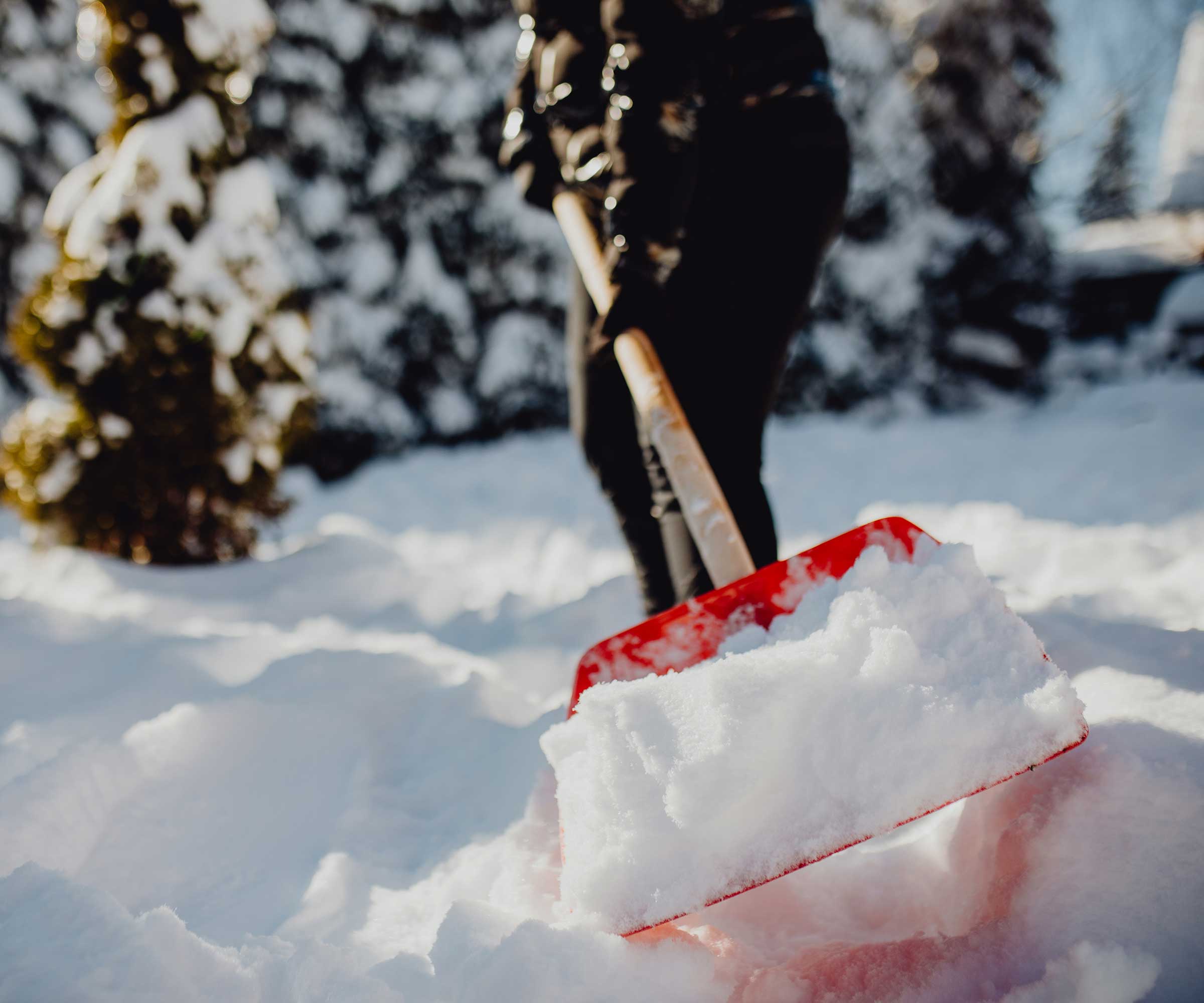
It's best to be as efficient as possible when shoveling snow to save time and reduce the risk of injury. It sounds counterintuitive, but doing a little snow shoveling often is actually the most efficient way to shovel snow.
Jeremy Yamaguchi explains that 'Even if it’s actively snowing, go out and shovel for every 2-3 inches that accumulate rather than waiting until it’s all fallen so that you can do it in one go.'
Lighter snow is easier to shift, so clearing snow before it compacts into heavy snow and freezes hard means a lot less work once the snow has stopped.
Of course, this isn't possible if it snows while you're asleep. However, if you wake up to heavy snow, you have a few options.
Steven Mena says 'If you're dealing with thick or heavy snow, it's best to start at the top and work your way down. Dealing with thick layers can be a bit tricky, so it’s a good idea to break them down into smaller sections to avoid overdoing it.'
Whatever you do, the most efficient clearance pattern is to push snow out towards the edges of a yard. It means that snow will pile in drifts at the sides of the yard, keeping space for drives and paths. It also means you won't waste time on clearing the snow at the sides of the yard.
Steven says 'When you're tackling your driveway, it's best to begin in the middle and push the snow out toward the edges. This way, you’ll save both time and energy.'
3. How to pick the right snow shovel

Different snow packs and spaces require different shovels. There are three main types: ergonomic, push, and standard shovels.
Steven Mena 'Picking the right shovel really can make a big difference in how efficiently and safely you work. Ergonomic shovels are super handy because they’re made to help lessen the strain on your back and joints.'
Steven adds 'If you have a bigger driveway or pathway, a push shovel works really well.' Push shovels are exactly as they sound, designed to push snow out of the way rather than lift and throw it. The best models are like wheelbarrows - they have a single wheel behind the blade to make it even easier to push the snow. This tends to be much better for your back, but it can be hard to use on heavy, compacted snow, and they tend to be more expensive than snow shovels.
If both of these sound like overkill, you can just use a standard snow shovel, but bear in mind all the tips above. If you lift the snow incorrectly you could seriously damage your back.
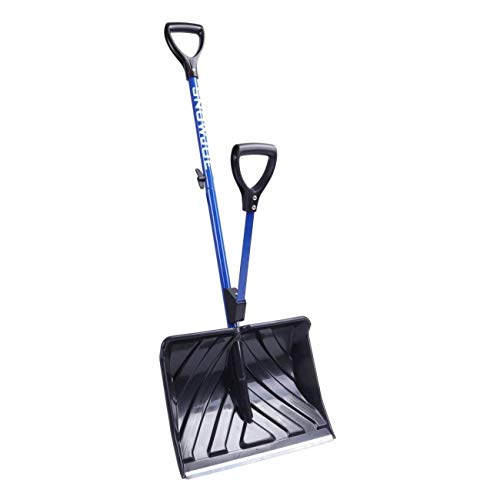
This shovel has a supplementary handle at the blade to make it much easier to gain leverage on heavy snow. Steven says 'It features a spring-loaded second handle that helps take the lifting pressure off your lower back. It's a wise purchase for anyone wishing to lessen the stress of traditional shoveling.'

This extra-wide snow shovel is perfect for big driveways and heavy snow. Steven says 'If you have a bigger driveway or pathway, a push shovel such as the Snowplow 24-Inch Push Shovel works really well. The durable blade and wide design make it great for quickly clearing large areas, but it works better for pushing snow than lifting it.'
4. Use a little cooking oil
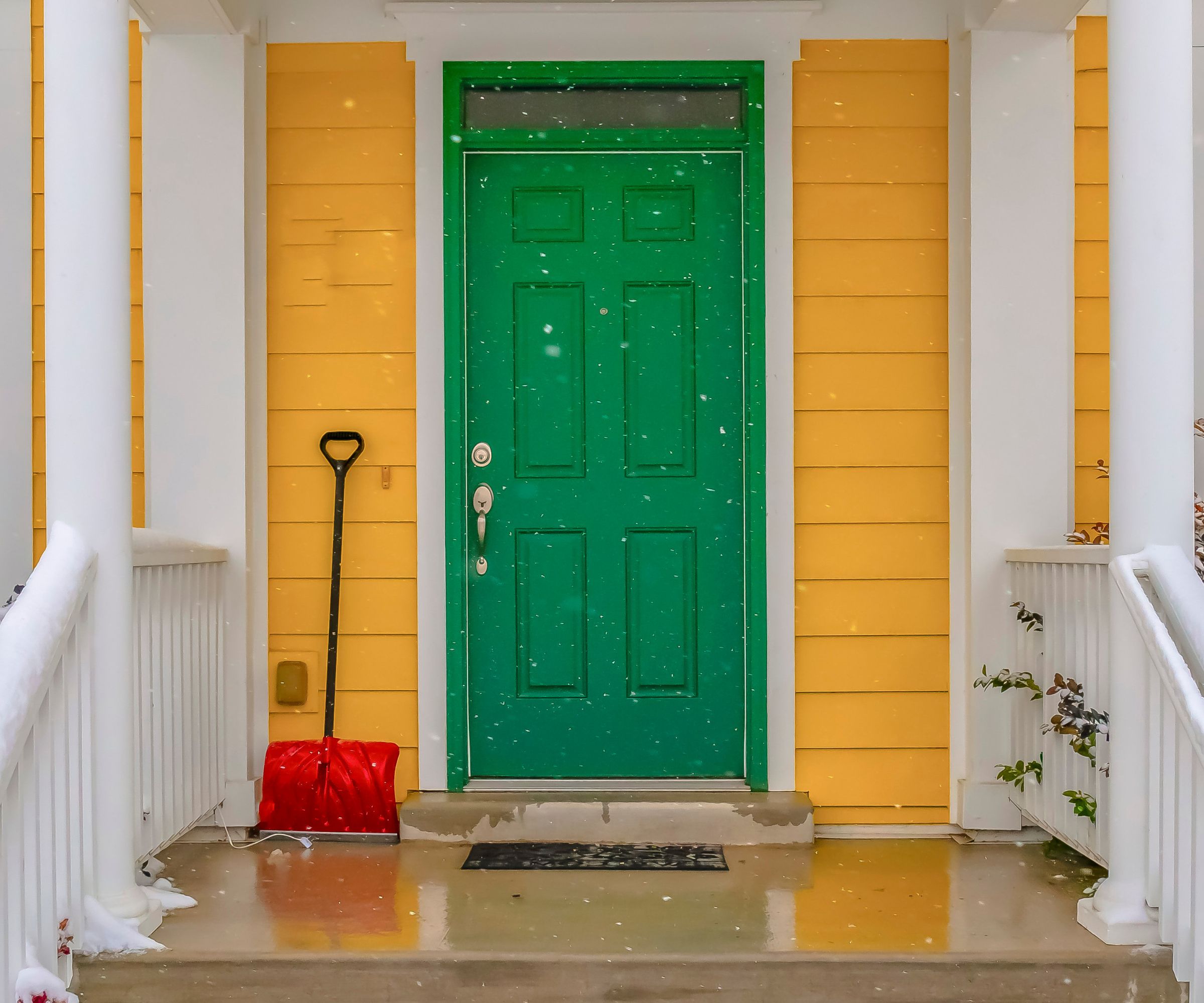
A surprising tip to help your snow shoveling is to use a little cooking oil. There are few things as irritating as snow sticking to your shovel. It can even cause injury; if the snow doesn't come off the shovel when you heft it, your body isn't braced for the weight, and this can cause back injuries.
You can stop this from happening by adding a little cooking oil to the blade of the shovel. The easiest way to apply this is to use a cooking oil spray like this from Walmart rather than oil from a bottle. You can spritz it right onto the shovel without getting your hands messy.
It doesn't have to be oil, either. Common DIY lubricants like WD-40 also work well. However, WD-40 is a little more expensive than cooking oil, so you might want to save it for your other projects.
Snow expert Lorne Chadwick says 'Applying cooking oil or WD-40 to your shovel can help prevent snow from sticking to it, which will make your job a little easier.'
5. Don't overfill your shovel
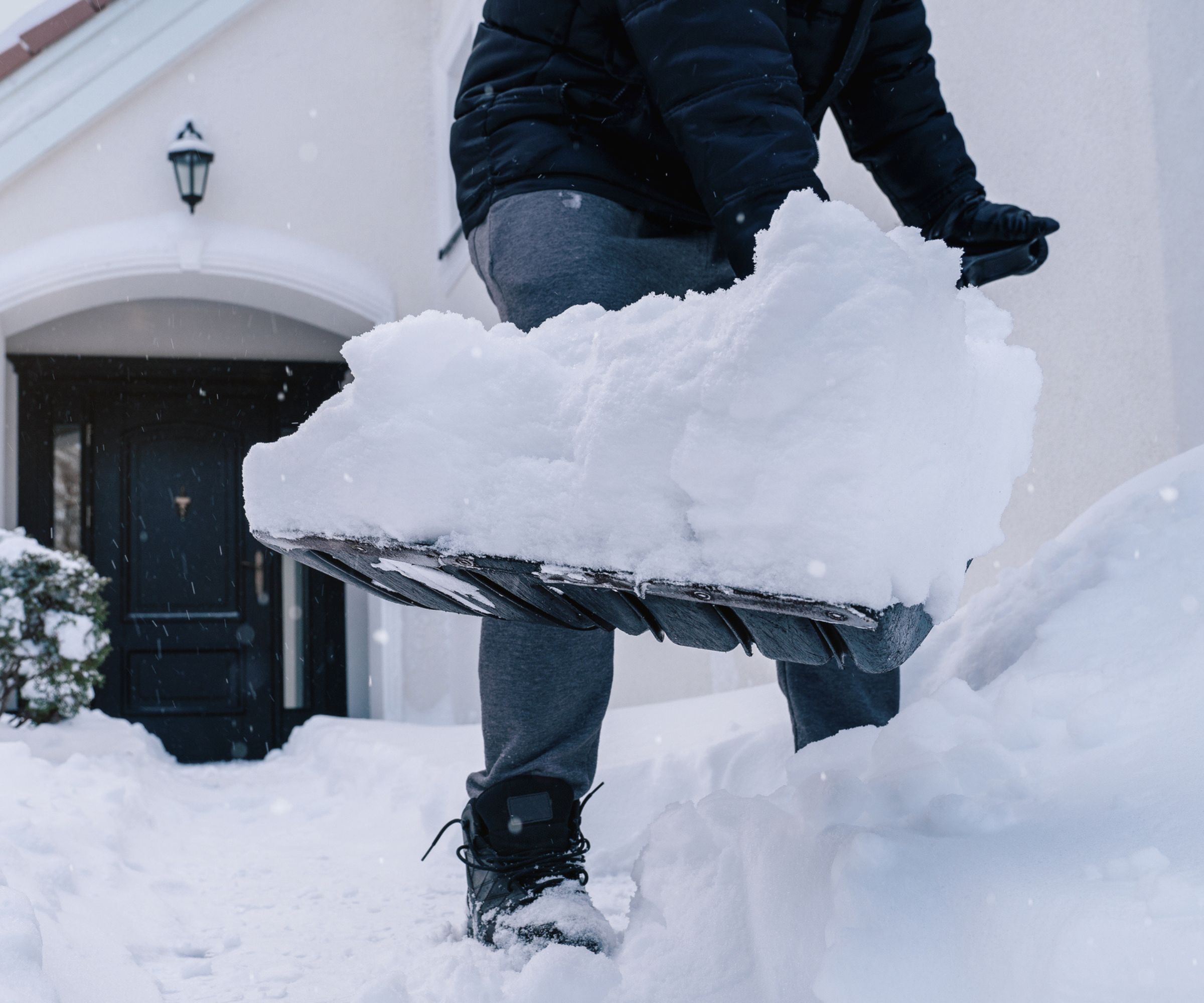
Whatever you do, don't overfill your snow shovel. Adding too much snow to your shovel at once has a lot of drawbacks. It's harder on your body to lift, and if you have a cheap plastic snow shovel, it could even bend the handle.
It takes about as much time to dig out, brace, and throw a big shovel of snow as it does to move two smaller shovels of snow. The same amount is moved in the same amount of time, but one is much easier, so stick to small, fast shovels.
6. Prepare ahead of time
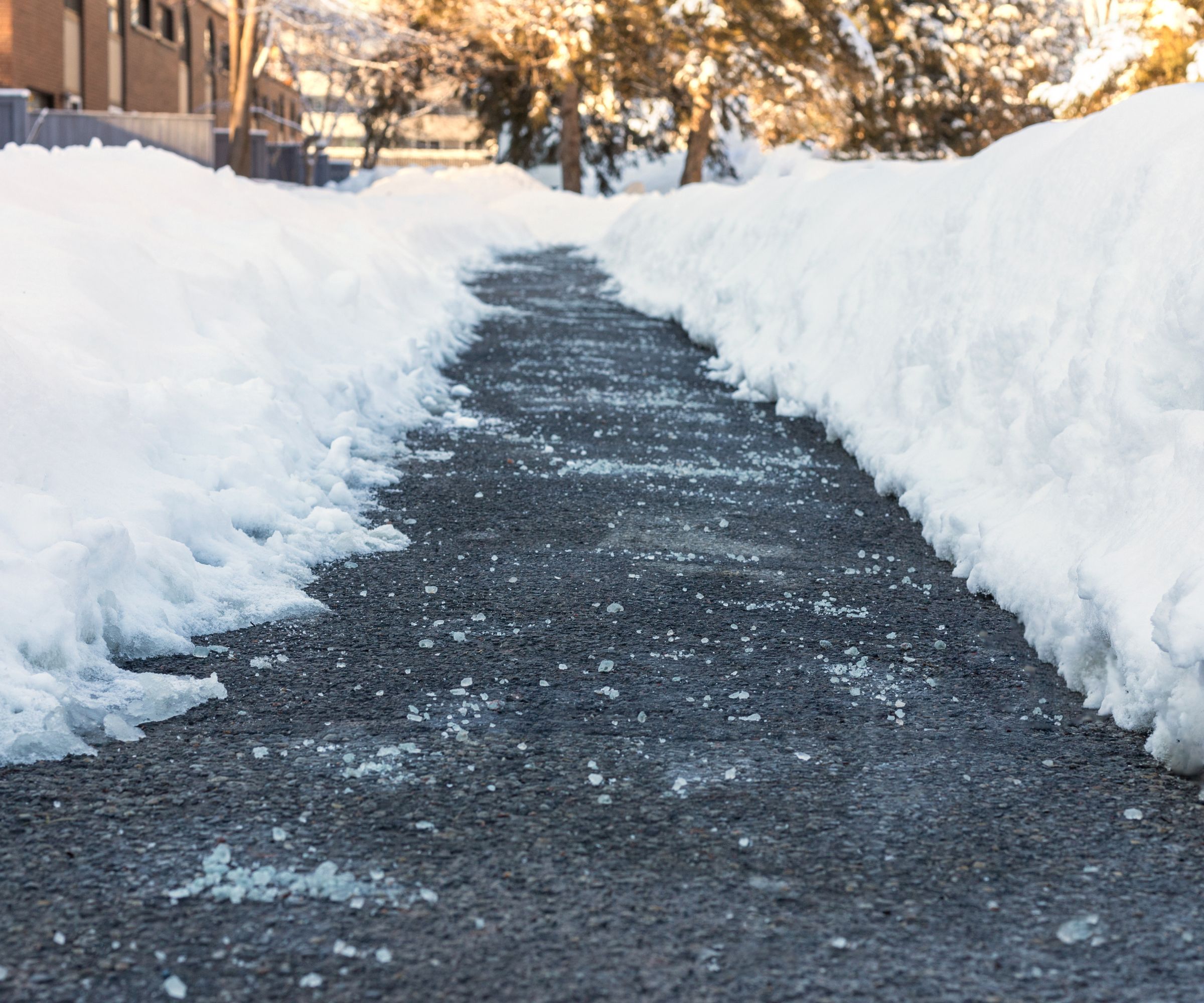
It's unhelpful if you're in the middle of dealing with a snowstorm, but one of the best ways to make shoveling easier is to prepare ahead of time.
Gritting your decks and driveways to reduce ice build-up is crucial, and it's inexpensive. You can get a 50lb bag of rock salt at Tractor Supply Co. for less than $8. Just spread it over the surface - roughly a cup per square foot - and this will reduce the likelihood of snow and ice building up on your pathways and drives.
You can also buy heated mats for paths and stairs. Lorne Chadnick says 'These are great because they basically do the work for you'. You can find heated mats like this at Amazon and other retailers.
Before you break out your snow shovel, bear in mind that you don't need to clear the entire yard. There are four places you shouldn't clear snow, as they can be dangerous or damage your property.

As a gardens and lifestyle contributor, Alex makes sure readers find the right information to help them make the best purchase. Alex got his start in reviewing at the iconic Good Housekeeping Institute, testing a wide range of household products and appliances. He then moved to BBC Gardeners’ World Magazine, assessing gardening tools, machinery, and wildlife products.
